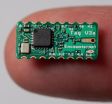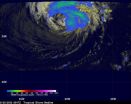(Press-News.org) It's a high-pressure environment within solid tumors. Abnormal blood and lymphatic vessels cause fluids to accumulate, and the uncontrolled proliferation of cancer cells within limited space leads to the buildup of what is called solid stress. Both types of pressure can interfere with the effectiveness of anticancer treatments, but while strategies have been developed that reduce fluid pressures, little has been known about the impact of solid stress or potential ways to alleviate it. Now a Massachusetts General Hospital (MGH) research team has identified factors that contribute to solid stress within tumors, suggesting possible ways to alleviate it, and has developed a simple way to measure such pressures.
"Traditionally cancer research has focused on cancer cells and, more recently, on the biochemical microenvironment of tumors," says Rakesh Jain, PhD, director of the Steele Laboratory for Tumor Biology at MGH and senior author of the study in the Sept. 18 issue of Proceedings of the National Academy of Sciences. "Our work shows that the physical or mechanical microenvironment plays an equally important role in tumor progression and treatment resistance."
Jain and his colleagues have been leaders in understanding the impact of elevated fluid pressures that make it difficult for drugs to enter and permeate tumors. Their work showed that fluid pressures are relieved when antiangiogenesis drugs normalize the abnormal blood vessels characteristically found within solid tumors, improving the effectiveness of other anticancer therapies. But that approach can only work if vessels have not been squeezed shut by solid stress in surrounding tissues. In recent studies Jain's team showed that solid stress also increases the invasiveness of cancer cells.
The current study was designed to develop techniques that measure solid stress in tumors, to identify factors that contribute to the generation of this solid stress and to determine whether previously compressed blood vessels would open when stress-inducing components were depleted. Based on predictions from mathematical models, the MGH-based team developed a remarkably simple way to measure solid stress within tumor tissues.
In experiments using both tumors experimentally grown in mice and tumors removed from human patients, the researchers found that, when a solid tumor is cut in two, each segment begins to swell along the sliced surface, releasing stored solid stress. In contrast, when a sample of normal tissue is cut in two, the separated halves of tissue retain their size and shape (links to video files below). Measuring the extent of shape relaxation along with other mechanical properties of tumor tissue enabled calculation of the amount of solid stress within a tumor sample.
Sample of breast tumor grown in mouse expands after cutting, releasing solid stress
Sample of normal mouse kidney tissue, showing no change in shape after cutting
Additional experiments utilizing the newly developed technique identified several components that contribute to increased solid stress within tumors, including the proliferation not only of cancer cells but also of fibroblasts and other components of the tumor's extracellular matrix. In pancreatic tumors implanted into mice, the researchers showed that inhibition of a pathway leading to the growth of fibroblasts reduced solid stress associated with tumor growth and opened up compressed blood and lymphatic vessels, which could both relieve fluid pressure and improve the delivery of chemotherapy drugs.
The authors note that their results may explain why the use of antiangiogenesis drugs has not improved treatment of highly fibrotic tumors – including dangerous pancreatic, lung and breast cancers – and suggest that a strategy targeting both aspects of intratumor pressure should be explored. "Now that we have seen how tumors exploit physical forces to facilitate progression and treatment resistance, we need to learn how to tame these fluid and solid forces to improve treatment outcomes," says Jain, the Cook Professor of Radiation Oncology (Tumor Biology) at Harvard Medical School. "We urgently need to identify safe pharmaceutical agents that reduce solid stress and then add them judiciously to current treatments."
INFORMATION:
Co-lead authors of the PNAS paper are Triantafyllos Stylianopoulos, PhD, and John D. Martin of the Steele Laboratory. Additional co-authors are Vikash Chauhan, Saloni Jain, Benjamin Diop-Frimpong, Yves Boucher, PhD, and Lance Munn, PhD, Steele Lab; Nabeel Bardeesy, PhD, MGH Center for Cancer Research; Barbara Smith, MD, MD, and Cristina Ferrone, MD, MGH Department of Surgery; and Francis J. Horniceki, MD, PhD, MGH Orthopaedic Oncology. The study was supported by grants from the National Institutes of Health and the Department of Defense.
Massachusetts General Hospital, founded in 1811, is the original and largest teaching hospital of Harvard Medical School. The MGH conducts the largest hospital-based research program in the United States, with an annual research budget of more than $750 million and major research centers in AIDS, cardiovascular research, cancer, computational and integrative biology, cutaneous biology, human genetics, medical imaging, neurodegenerative disorders, regenerative medicine, reproductive biology, systems biology, transplantation biology and photomedicine. In July 2012, MGH moved into the number one spot on the 2012-13 U.S. News & World Report list of "America's Best Hospitals."
END
If two birds meet deep in the forest, does anybody hear? Until now, nobody did, unless an intrepid biologist was hiding underneath a bush and watching their behavior, or the birds happened to meet near a research monitoring station. But an electronic tag designed at the University of Washington can for the first time see when birds meet in the wild.
A new study led by a biologist at Scotland's University of St. Andrews used the UW tags to see whether crows might learn to use tools from one another. The findings, published last week in Current Biology, supported the theory ...
PASADENA, Calif.—At any given moment, millions of cells are on the move in the human body, typically on their way to aid in immune response, make repairs, or provide some other benefit to the structures around them. When the migration process goes wrong, however, the results can include tumor formation and metastatic cancer. Little has been known about how cell migration actually works, but now, with the help of some tiny worms, researchers at the California Institute of Technology (Caltech) have gained new insight into this highly complex task.
The team's findings are ...
Los Angeles, CA (September 20, 2012) SAGE and The Society for Medical Decision Making are pleased to announce the release of seven new reports that will have a significant impact on modeling techniques in health care research and medical decision making. Written by the Modeling Good Research Practices Task Force, a special group of leading experts in decision analysis, economics, simulation, and health policy, these reports were published in a special issue of Medical Decision Making (MDM), a SAGE journal.
"The history of decision and economic modeling to support health ...
Investigators at Northwestern University Feinberg School of Medicine have identified two promising therapies to treat patients with acute megakaryocytic leukemia (AMKL), a rare form of leukemia where the number of cases is expected to increase with the aging population.
The disease is characterized by an overload of white blood cells that remain forever young because they can't mature into specialized cells. Published in a recent issue of the journal Cell, the study found that the drug with the generic name alisertib (MLN8237), induced division and growth of healthy ...
The pressures of global trade may heighten disease incidence by dictating changes in land use. A boom in disease-carrying ticks and chiggers has followed the abandonment of rice cultivation in Taiwanese paddies, say ecologist Chi-Chien Kuo and colleagues, demonstrating the potential for global commodities pricing to drive the spread of infections. Their work appears in the September issue of ESA's journal Ecological Applications.
After Taiwan joined the World Trade Organization in 2001, active cultivation of rice paddies fell from 80 percent to 55 percent in just three ...
Scientists and forecasters have been analyzing Tropical Storm Nadine using various NASA satellites as NASA's Global Hawk flew over the storm gathering information. Both the Global Hawk and NASA's TRMM satellite noticed that Nadine has continued to display tropical characteristics, indicating that it has not transitioned to an extra-tropical storm.
Forecasters noted that Nadine could have started transitioning into an extra-tropical storm, because there was little significant rainfall near Nadine's center of circulation yesterday, Sept. 19. However, satellite data and ...
Tried-and-true techniques could help optimize oilseed yield for biodiesel production, according to studies conducted by U.S. Department of Agriculture (USDA) scientists.
For more than 30 years, near infrared (NIR) reflectance spectroscopy has been used as a rapid and nondestructive method for measuring protein, moisture, and oil levels in whole grains. Now Agricultural Research Service (ARS) research leader Dan Long is studying how to use remote sensing tools to quickly assess seed oil quality and quantity before and after harvest.
ARS is USDA's chief intramural scientific ...
The sun's atmosphere dances. Giant columns of solar material – made of gas so hot that many of the electrons have been scorched off the atoms, turning it into a form of magnetized matter we call plasma – leap off the sun's surface, jumping and twisting. Sometimes these prominences of solar material, shoot off, escaping completely into space, other times they fall back down under their own weight.
The prominences are sometimes also the inner structure of a larger formation, appearing from the side almost as the filament inside a large light bulb. The bright structure around ...
In a preliminary clinical trial, investigators at Johns Hopkins have shown that even partially-matched bone marrow transplants can eliminate sickle cell disease in some patients, ridding them of painful and debilitating symptoms, and the need for a lifetime of pain medications and blood transfusions. The researchers say the use of such marrow could potentially help make bone marrow transplants accessible to a majority of sickle cell patients who need them.
After a median follow-up of two years, the transplants successfully eliminated sickle cell disease in 11 of 17 patients. ...
Scientists from Queen Mary, University of London have tracked bumblebees for the first time to see how they select the optimal route to collect nectar from multiple flowers and return to their nest.
In a paper published in PLOS Biology today (18 September), the scientists, working with the Harmonic Radar Group at Rothamsted Research, were able to use radar tracking to show how bumblebees discover flowers, learn their location and use trial and error to find the most efficient route between flowers over large distances.
Professor Lars Chittka and Dr Mathieu Lihoreau ...



